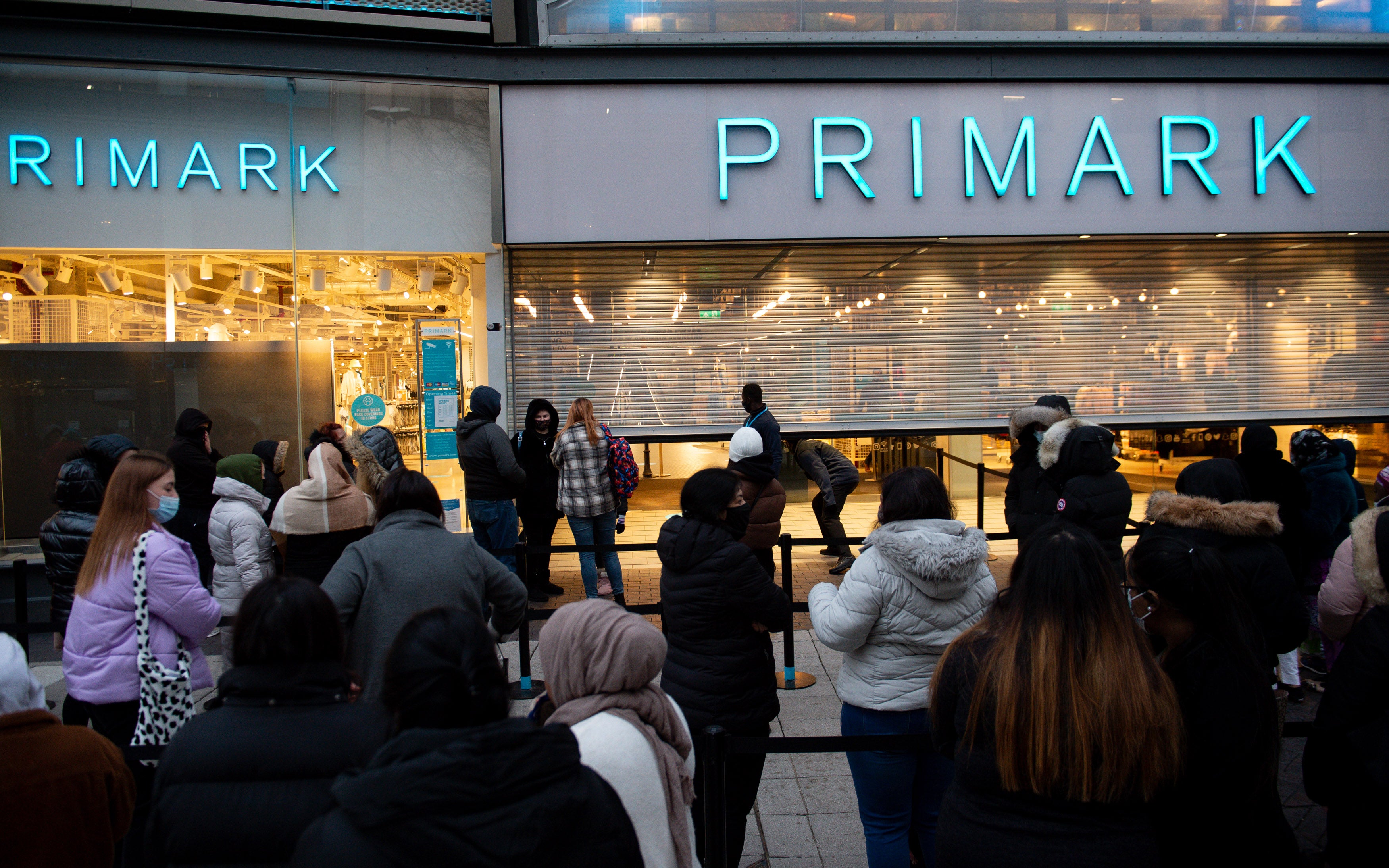As Primark sales take a tumble, will it ever add clicks to its bricks to boost them?
A whizzy new website is planned and it would be no great surprise if the company finally sells online, writes James Moore


Primark’s fourth quarter sales slump looks nasty but it’s far from a crisis for the retailer, or its owner, Associated British Foods (ABF).
Fast fashion’s top model also said it had experienced “lower store operating costs” after the reopening of its shops following repeated lockdowns.
As such, profits will be higher than expected and ahead of last year’s showing, before the (voluntary) repayment of government job support schemes in the various territories in which the chain operates.
Money in the bank ought to ease the pain of sales that were always threatened to be shaky.
The “pingdemic”, along with Covid restrictions in some European markets, are to blame for that. They contributed to declines of as much as a quarter in some weeks of the final three months of Primark’s financial year, which runs to the middle of September.
However, markets are opening up across Europe. The pingdemic is unique to Britain, still a key market, but it is also firmly in the rearview mirror.
Unfortunately for Primark, its troubles aren’t over. It faces a grave challenge from blockages at ports affecting goods coming in from Asia and then there’s Britain’s lorry driver shortage and supply chain crisis, created by Brexit among other things.
The company is facing an inventory shortage of as much as £200m when compared to expectations as a result.
That was enough to spook some investors and with good reason. Primark’s model rests upon presenting shoppers with the widest possible range of rapidly updated product to tickle their fancy.
Its prices are low enough that people who enter one of its shops with a view to buying a pair of jeans will probably depart with a couple of tops and maybe a pair of the £14 trainers that have created quite the buzz on Instagram too.
The chain’s finance chief was quick to say he didn’t expect the inventory issue to impact on customers but expectations can change, especially during a pandemic. He also said the company isn’t expecting to increase its prices. Smart, but then Primark doesn’t have much room to do that, not with the way money is set to pour out of its youthful demographic’s pockets thanks to Boris Johnson’s tax rises.
The problem for the retailer is that its model does look less effective if you remove the fast from it, and the current situation threatens to do that, notwithstanding efforts to mitigate the problem.
Still, if this issue is behind the City’s nerves – there are others affecting ABF – it needs a cup of cocoa.
Regardless of what you think about the ethics of the garment industry, and of the environmental issues it creates, Primark’s formidable abilities as a retailer have never been in doubt.
It’s the same issues affecting other businesses with more pedestrian bosses that should be the cause of concern.
Primark will manage. It might even create a bit of extra excitement with online down the line. The retailer doesn’t currently sell through that channel but it’s a dab hand at using it to showcase its offerings and lure customers. And it has been investing heavily in improving what it does.
A new website is coming, and if Primark chooses to make it transactional at some point in the future, well that wouldn’t be the greatest of surprises, not least because it’s getting lonely on the High Street and that has an impact on passing trade.
It might be overegging it to imagine a future in which Primark and Mike Ashley are the last men standing. It might be. It certainly isn’t overegging it to imagine Primark adding clicks to its bricks.
Join our commenting forum
Join thought-provoking conversations, follow other Independent readers and see their replies
Comments
Bookmark popover
Removed from bookmarks